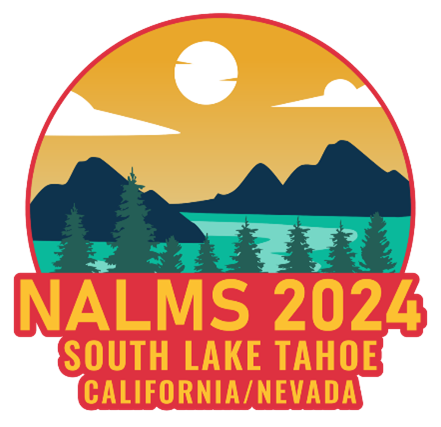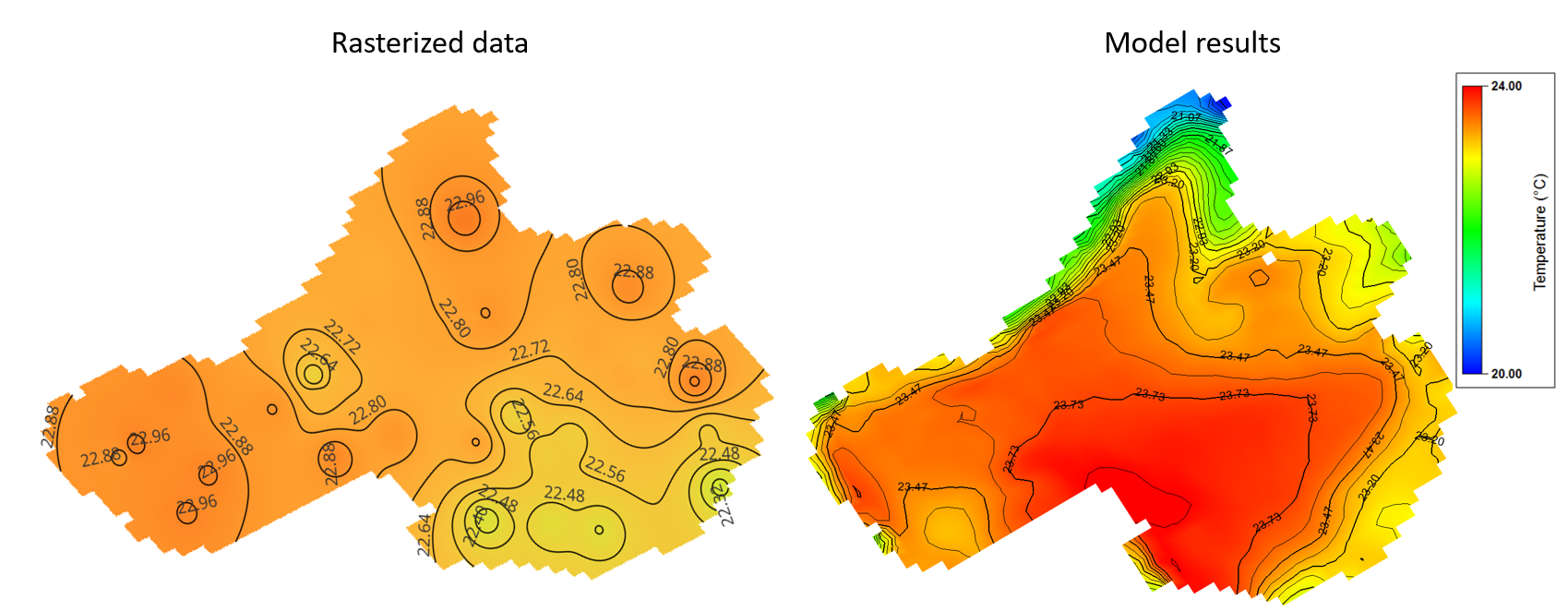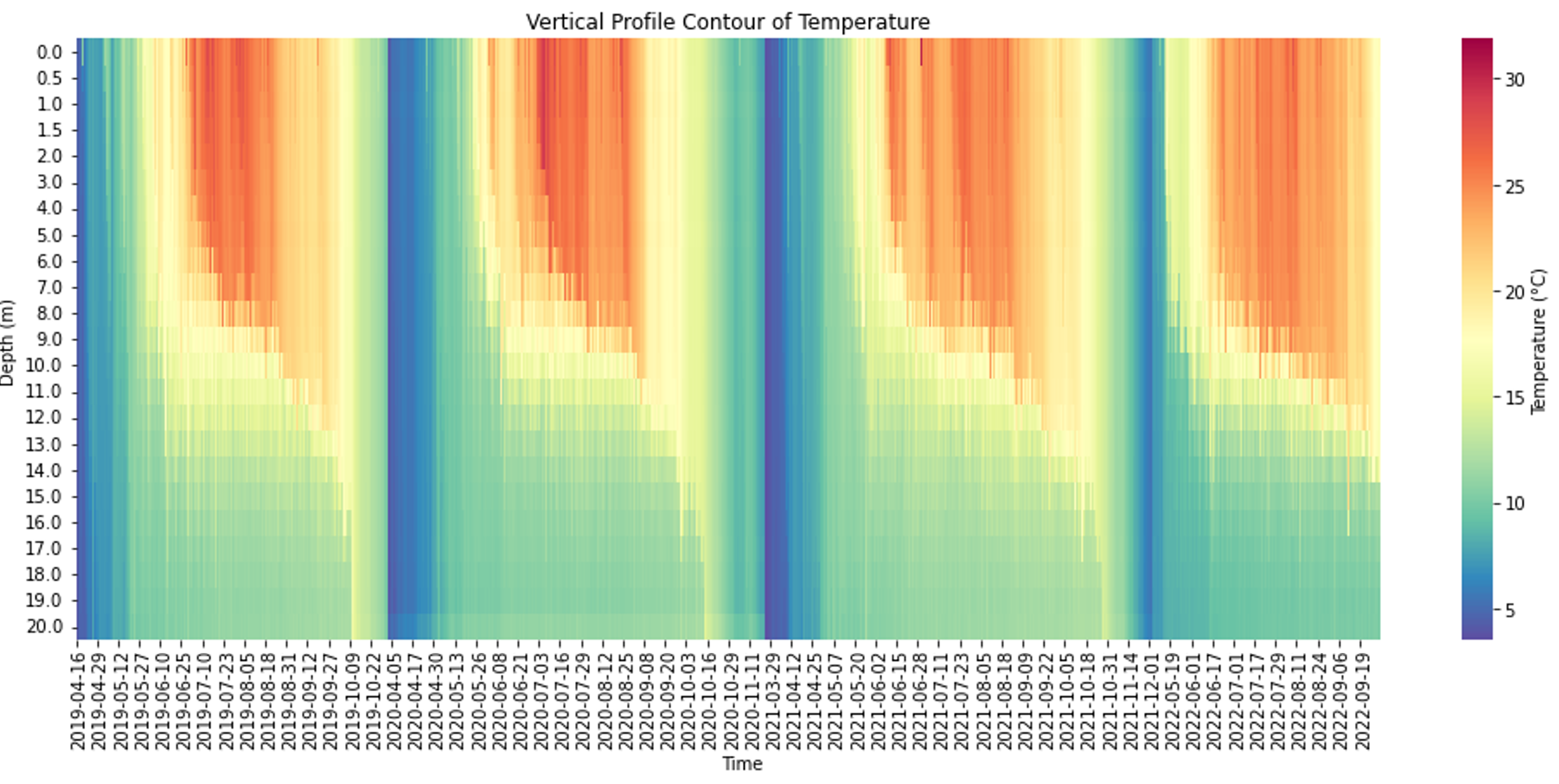
Authors: Nguyen T K Linh, Mehrzad Shahidzadehasadi, Thomas J Mathis,
Tran Duc Kien, Bui Minh Hoa, Wei-Cheng Wu, Paul M Craig
Dates: November 5-8, 2024
Location: South Lake Tahoe, CA/NV
Lake Mendota, the largest lake in Madison, Wisconsin, exhibits complex thermal dynamics with pronounced summer stratification and reverse winter stratification under ice. To accurately model these dynamics, it is crucial to understand the impact of heat exchange processes and turbulence closures. This study investigates the effect of different heat exchange options and turbulence closures in EFDC+ on temperature prediction, comparing the outcomes to extensive empirical data.

EFDC+ offers several options for both heat exchange calculations and turbulence schemes. The heat exchange analysis in this study examined two methods: Full Heat Balance, Coupled Ocean-Atmosphere Response Experiment (COARE 3.6) and the turbulence closure analysis explored four schemes: Mellor-Yamada (EFDC+ Original Approach), Mellor-Yamada General Ocean Turbulence Model (GOTM), k-ε (GOTM), and k-ω (GOTM). EEMS user interface is shown both for vertical turbulence and Heat exchange in figure 1.

Results were validated against four datasets:
The first dataset provided spatially distributed surface sonde measurements from 35 randomized grid points across four summer seasons, the mean location of the grid cells is shown in figure 2 offering insights into spatial variability and helping evaluate the model's sensitivity in different parts of the lake. Different parameters in this dataset are interpolated and rasterized, then compared to model results at that date/time, an example is shown in figure 3.


The second dataset contained depth profiles from 0 to 20 meters, capturing water temperature. This dataset helped in assessing the model's ability to accurately represent lake stratification and vertical gradients. Animation below shows the vertical profile of Temperature from this dataset.

The third dataset offered continuous measurements from an instrumented buoy located in a deep part of the lake, supplying minutely data on the lake's temperature. This dataset was key to understanding the lake's dynamics over time. The temperature vertical profile contours generated from this dataset are shown in figure 4.

The fourth dataset includes ice temperature measurements from 0 to 22 meters at the buoy location, providing data for analyzing the lake's winter stratification. The temperature vertical profile contours generated from an hourly measured under ice temperature dataset are shown in figures 5 and 6.


These results suggest that COARE 3.6 for heat exchange and GOTM-based turbulence closures offer reliable methods for hydrodynamic modeling in freshwater systems like Lake Mendota, yielding accurate temperature predictions and better representation of complex stratification patterns.
References
knb-lter-ntl.428.1 Data Portal - Data Package Summary | Environmental Data Initiative (EDI) (edirepository.org)
knb-lter-ntl.400.4 Data Portal - Data Package Summary | Environmental Data Initiative (EDI) (edirepository.org)
knb-lter-ntl.1.60 Data Portal - Data Package Summary | Environmental Data Initiative (EDI) (edirepository.org)
knb-lter-ntl.130.32 Data Portal - Data Package Summary | Environmental Data Initiative (EDI) (edirepository.org)
knb-lter-ntl.390.3 Data Portal - Data Package Summary | Environmental Data Initiative (EDI) (edirepository.org)
Let us know if you have questions or interest in this topic. We hope to see you at the conference.